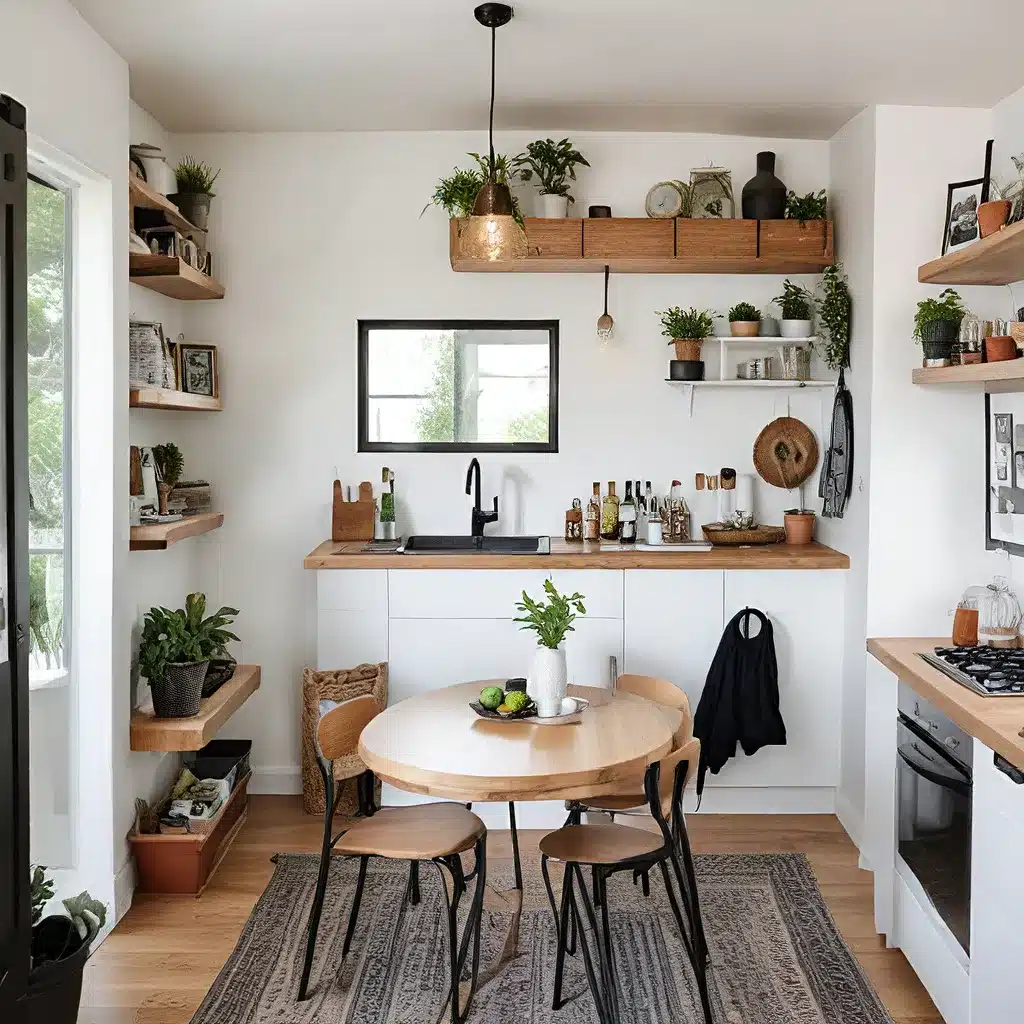
In an era where bigger is often perceived as better, a growing movement has embraced the remarkable potential of tiny living. This minimalist lifestyle, focused on downsizing and living in small spaces, has sparked a profound shift in how we approach our homes, our possessions, and ultimately, our priorities.
The Psychology of Tiny Living
At the heart of this trend lies a deeper understanding of the psychology behind minimalism and downsizing. As an environmental psychologist explained, the process of paring down one’s belongings can be both liberating and challenging. Letting go of items with sentimental value can feel like losing a part of oneself, as people form strong attachments to the objects that remind them of loved ones or special moments.
However, once the initial stress and emotional toll of downsizing subsides, the relief and freedom that comes with living with less clutter and more space can be truly transformative. This simplicity leads to a happier, more focused lifestyle, as individuals find themselves less distracted by the demands of maintaining an abundance of possessions.
The Mental Health Benefits of Minimalism
Adopting a minimalist lifestyle has been shown to have significant mental health benefits. By reducing the number of distractions and demands on one’s attention, the mind can relax and concentrate better. Fewer material possessions also translate to lower anxiety levels, as there are fewer worries about the upkeep, loss, or damage of things that do not genuinely add value to one’s life.
Furthermore, this shift towards prioritizing experiences over possessions fosters a sense of freedom and contentment. When individuals focus on activities that foster connections with others or personal growth, they often experience a deeper sense of satisfaction and well-being.
Maximizing Small Spaces
Living in a tiny home or small space requires creative solutions to make the most of every square foot. Innovative furniture that serves multiple purposes, such as beds with built-in storage or tables that fold away, can be game-changers in maintaining a functional and clutter-free environment.
Regular decluttering is also crucial in tiny living spaces, as it helps individuals control the amount of stuff and prevent their homes from feeling cramped. Vertical storage solutions and organization hacks can further maximize the available space, making small areas feel larger and more inviting.
Embracing the Tiny Living Lifestyle
The transition to tiny living often begins with resistance, as individuals grapple with the fear of change and the perceived loss of comfort or possessions. However, this stage is crucial for growth, as it challenges people to question what they truly need versus what they desire out of habit.
As the adjustment process progresses, feelings of uncertainty and the need for creativity and compromise arise. But with patience and adaptability, the unexpected joys of tiny living begin to emerge. Discovering new ways to organize, decorate, and maximize the small space can turn this period into a rewarding challenge.
The Financial and Environmental Benefits
Choosing to embrace a minimalist, tiny living lifestyle often leads to significant financial savings. The costs of buying or building a tiny house are usually much lower than traditional homes, allowing individuals to reduce debt and allocate more resources towards other goals and experiences.
Furthermore, tiny homes have a smaller environmental footprint, as they use fewer resources in construction and throughout their lifespan. This aligns with the growing emphasis on sustainable and eco-friendly living, making tiny living an attractive option for those seeking to reduce their impact on the planet.
Strengthening Relationships and Fostering Connections
Living in a tiny space demands clear communication and the establishment of boundaries, as personal spaces often overlap with communal areas. This process can be challenging, but it also brings families closer through shared experiences and the need to work together.
Tiny living encourages quality time with loved ones, as the reduced distractions and smaller living spaces create opportunities for activities like playing board games, cooking meals together, and engaging in meaningful conversations. These shared experiences can strengthen bonds and foster a deeper understanding of each other’s needs and desires.
The Journey Towards Tiny Living
Embracing the tiny living lifestyle is more than just a change of address; it’s a profound shift in one’s mental landscape and relationships. By decluttering not just the physical space but also the mind, individuals can pave the way for enhanced mental well-being and stronger bonds with their loved ones.
The journey towards tiny living is not about coping with less; it’s about embracing a life that values experiences over possessions, leading to unexpected joys and a sense of financial liberation. It’s a transformative adventure that invites you to reimagine your life, one small step at a time, and discover the remarkable potential of living intentionally in a small space.
So, why not take the leap and embark on this tiny living adventure? The rewards of a minimalist lifestyle, enhanced mental health, and a greener footprint await those who embrace the power of living large in a small space.

